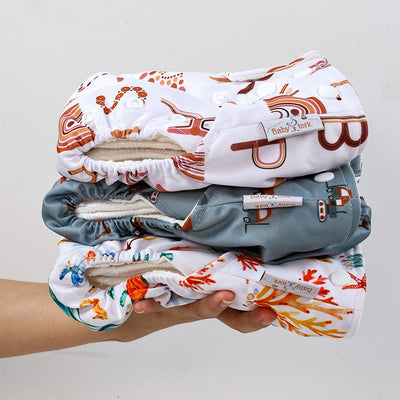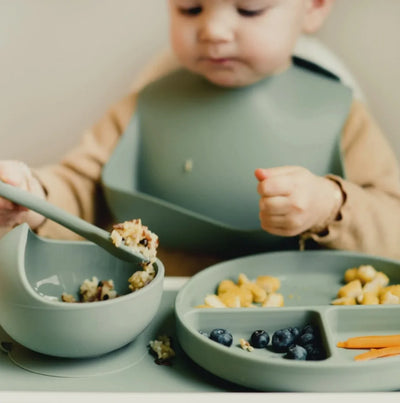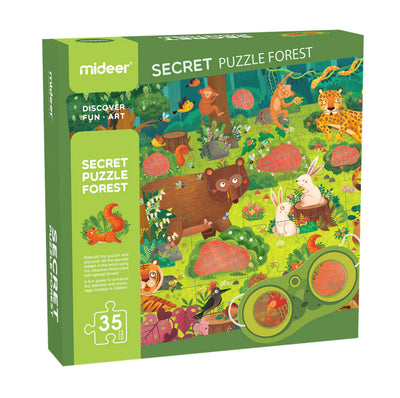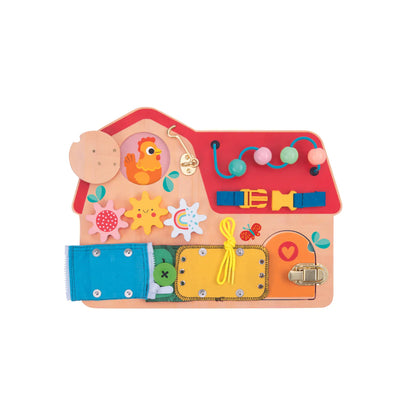Within the field of early childhood development, play serves as an effective means of education. The creative use of busy boards is one method for combining learning and play. These tactile, interactive boards can hold a preschooler's interest and function as an engaging medium for developing fundamental motor and cognitive abilities. If you are new to this educational toy, here is a detailed explanation of what a busy board is and how it extends support in toddlers' early learning experiences.
What are busy boards, and how do these encourage better learning?
Busy boards, sometimes called activity or sensory boards, are composed of various materials and interactive features for kids to engage with. These components may include laces, zippers, switches, buttons, etc. While stimulating a child's senses and developing fine motor skills are the main goals of a busy board, there are other educational benefits as well. So, just as an excellent supportive baby walker helps the child's physical development, an active board does the same regarding mental development.
Key elements that make busy boards a great inclusion:
- Colours and Shapes:
Using colours and shapes on educational busy boards is an essential part of teaching. Incorporating buttons with vibrant colours or cuts tailored to specific shapes helps kids recognise these fundamental components and improve their fine motor skills while manipulating and exploring.
- Numeracy and Counting:
Busy boards can easily incorporate counting and numbers. Preschoolers can participate in amusing counting activities by attaching miniature doors with numbers or adding abacus-like features, which lays the basis for numeracy abilities in an enjoyable and participatory way.
- Alphabet Exploration:
Putting letters and words on a busy board can be a handy tool for language development.
- Texture Recognition:
Playing with different textures, such as smooth materials, bumpy surfaces, or soft fabric, helps toddlers become more adept at tactile discrimination while having a sensory-rich play experience.
Developmental benefits of offering a mindfully-designed to your preschooler:
- Cognitive Development:
Preschoolers continuously process information, come up with solutions, and make judgements as they interact with the various components on the busy board. This cognitive involvement enhances their ability to think critically.
- Enhancement of Fine Motor Skills:
As busy boards are hands-on and encourage children to use their fingers and hands precisely, they help children develop fine motor skills essential for writing and self-care tasks.
- Language and Communication Skills:
Children frequently use self-talk to describe their actions or pose questions as they investigate the numerous aspects on a busy board. It is essential to this self-expression to develop language and communication abilities. Encouraging play time with busy committees gives these little minds an excellent platform to express themselves.
Key takeaways:
Educational busy boards provide a vibrant and participatory approach to early childhood education. Play and learning are smoothly combined on these boards, making them valuable resources for educators and parents. Playtime becomes an exciting and educational experience when shapes, colours, numbers, and textures are incorporated. These aspects also support preschoolers' holistic development. Realising the promise of active boards, you can create an environment where play and learning coexist and lay the groundwork for a lifetime love of exploration and discovery. So, next time you need clarification about ways or toys to invest in to keep your little ones engaged, do keep these fantastic benefits of playing on a busy board in mind. Moreover, ensure the product quality and gather genuine customer testimonials before making the final investment.





